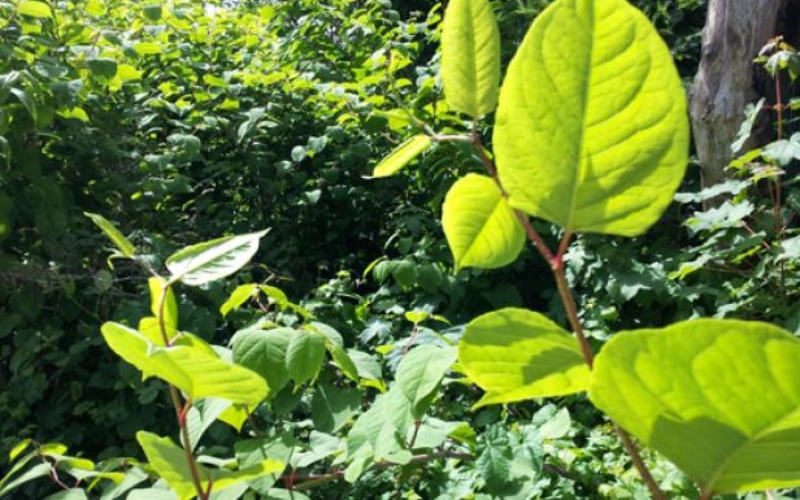How to Identify Japanese Knotweed.
Identifying Japanese knotweed correctly can be crucial, as property deals and mortgage decisions can depend on it. Unfortunately, other plants are easily mistaken for Japanese knotweed.
Key Knotweed Considerations
In this section, we deal with these cases of mistaken identity as well as presenting you with a raft of valuable information about how to make a correct identification. From here on, there’s really no excuse to get it wrong!
As with many other plants, Japanese knotweed identification will depend upon the time of year.
- The best-known characteristics of Japanese knotweed are its spade-shaped leaves (as in playing card spade) and tall, noded stems.
- The growing season is from April to October.
- Mild conditions can extend the growing season from March to November.
What does Knotweed look like?
If you’re unsure about identifying Japanese knotweed, use our free ‘ID My Weed’ service and send us a photo! If you’re sure that you have Japanese knotweed, simply Book a Survey here or give us a call on 0203 174 2187 or 01202 816 134.
Find below some Japanese Knotweed Images
Japanese knotweed in spring
In early spring, Japanese knotweed shoots can look like asparagus spears with reddish/purple speckling. As the shoots grow, and healthy knotweed grows very quickly, spade-shaped leaves begin to unfurl, often beginning their life tinted with red veins, turning lime-green as growth continues.
Japanese knotweed in summer
Happy knotweed will easily reach two to three metres in height by this time, making established Japanese knotweed in summer much easier to identify. There are now masses of lime-green leaves on tall, zig-zagging stems. In late summer, clusters of beautiful small white flowers appear which are loved by bees. These will turn to seed but, as things stand at the moment in the UK, none of these Japanese knotweed seeds are fertile.
Japanese knotweed in autumn
Like many perennial plants, Japanese knotweed in the autumn slows down. It will have completed its summer growth and the leaves will start to turn yellow, wilt and fall, exposing the bamboo-like ‘stand’ of stems, which also change to a darker reddish brown. This invasive weed is incredibly good at storing energy, generating a lot of food through photosynthesis and accumulating it in the knotweed rhizome (root system) in readiness for spring.
Japanese knotweed in winter
Winter is the time of Japanese knotweed dormancy; the leaves will have fallen and created a dense litter on the ground. The hollow knotweed canes may remain standing, but can be easily blown or knocked down. Don’t be fooled by the appearance of Japanese knotweed in winter. Although it may look dead, it’s just waiting for the weather to warm. Underneath the leaf litter, next year’s knotweed shoots are just waiting to emerge once more.
A case of mistaken identity?
Accurately identifying Japanese knotweed can be difficult and it is common for other, innocent plants to be labelled as knotweed. You may have received a surveyor’s report that identifies Japanese knotweed on the property you want to sell or to buy. As a result, you may have even have had a problem obtaining a mortgage. It can be a worrying time.
PBA Solutions undertake site surveys to determine if Japanese knotweed is present and document and report on the findings. You can book a survey here. Our reports integrate with the mortgage process and site developments, detailing the most appropriate knotweed treatment programme.
PBA Solutions can help you with our free ‘ID My Weed!’ invasive weed identification service. Click the link and send us some photographs (close-ups are preferable) of the suspect plant, including any additional details and your name and telephone number. We will do our best to identify the weed for you.
For help and information, call our friendly team on 0203 174 2187 or 01202 816134.















